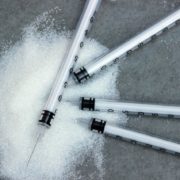Diabetes Patients Guilt of Packaging Waste
Many people have health conditions that result in reliance on medication or devices. An example is diabetes, where thousands of people have benefitted from insulin pumps and/or glucose monitors. These devices help the individual to manage their condition and retain quality of life. However, the volume of material used to package and send these items generates considerable packaging waste.
The Issue of Excess Packaging
One issue with medication and medical devices is they are usually wrapped in plastic to keep them sterile. Then there are the product boxes, shipping boxes and information leaflets. With glucose monitors needing to be replaced every 7-14 days and new pump tubes being changed every 2-3 days, packaging waste can soon mount up.
The other problem is there is no choice for the consumer. Unlike other products, you can’t pick a plastic-free alternative. Understandably, some environmentally conscious individuals are calling on producers to rethink the packaging.
An article, published in the British Medical Journal, has a few suggestions:
- Provide a QR code on the box with links to instructions to negate the need for information booklets.
- Use best-fit cardboard boxes for packaging and shipping
- Give clear instructions on what can and can’t be recycled through household collections
- Develop reusable applicators
We look forward to seeing the response from pharmaceutical companies on the issue of excess packaging.





